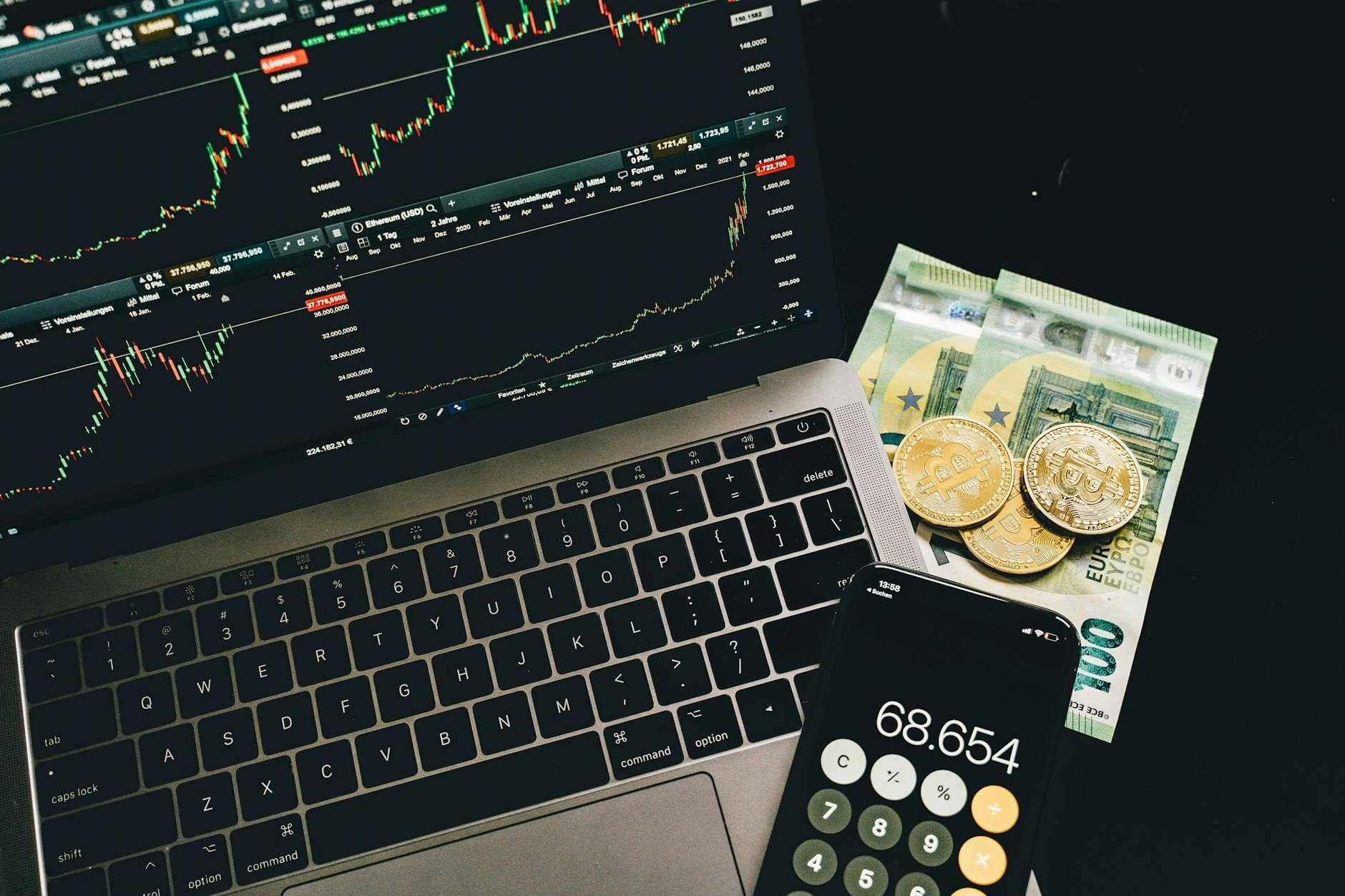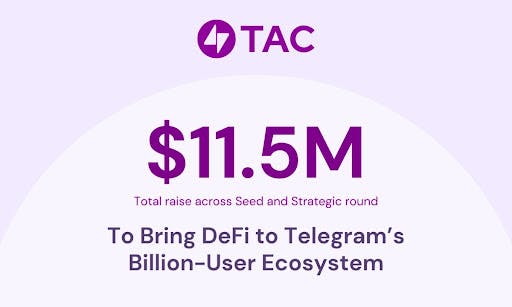Authors:
(1) Zhenbang Feng, Department of Electrical and Computer Engineering, Viterbi School of Engineering, University of Southern, California Los Angeles, CA, USA ([email protected]);
(2) Hardhik Mohanty, Department of Electrical and Computer Engineering, Viterbi School of Engineering, University of Southern, California Los Angeles, CA, USA ([email protected]);
(3) Bhaskar Krishnamachari, Department of Electrical and Computer Engineering, Viterbi School of Engineering, University of Southern, California Los Angeles, CA, USA ([email protected]).
Editor’s note: This article is part of a broader study. You’re reading part 3 of 5. Read the rest below.
Table of Links
III. PRICE-STABILIZING MECHANISMS
Synthetic derivatives like Single-Collateral DAI (SAI) aim to mirror a particular asset’s value. In SAI’s case, it seeks to peg its value to the US Dollar. The question then arises: How does it ensure that its value remains stable at 1 USD? In reality, several mechanisms work together to ensure this stability.
A. Emergency Shutdown
Emergency shutdown is a mechanism designed for extreme circumstances. This process can be triggered during events like security breaches or huge market volatility. It allows DAI holders to directly redeem its value for $1 of collateral at the point in time when the Emergency Shutdown is initiated, essentially enforcing the 1:1 USD soft peg.
B. DAI Savings Rate or Stability Fees
Another significant mechanism to ensure price stability is the DAI Savings Rate. When market dynamics push the DAI price away from the target, this savings rate is adjusted. If DAI’s market price goes above 1 USD, the savings rate decreases, reducing demand and pushing the price towards 1 USD. Conversely, if DAI’s price falls below 1 USD, the savings rate rises, increasing demand and nudging the price upwards. In the Single-Collateral DAI, there isn’t a DAI Savings Rate; instead, stability Fees on CDPs are adjusted directly to balance the demand and supply.
C. Keepers
Keepers play an invaluable role in maintaining DAI’s stability. These are typically automated agents incentivized by profit. They actively participate in Debt and Collateral Auctions during CDP liquidations. More crucially, they trade DAI around its target price, selling when the price is high and buying when it’s low, banking on the long-term convergence towards the target price, thereby helping in maintaining the price stability. Individuals or entities are often motivated to operate keepers due to the potential for profit. This profit expectation relies on their belief that the price of DAI will remain stable around 1 USD.
D. Narrative or Belief
An often underestimated element in the mechanism of stability is the narrative or the shared belief of its participants. While tangible mechanisms like target prices, keepers, and oracles play vital roles, the intangible narrative equally underpins the stability of such systems.
For example, the shared belief in DAI(SAI) is that it will stay aligned with the US dollar. This belief is propagated and reinforced through consistent communication, historical performance, community trust, and governance transparency. When participants uniformly believe in the 1:1 pegging, they act in ways that naturally enforce this peg further. For instance, if the price of SAI drifts slightly above 1 USD, the narrative would drive participants who are believing to sell, thereby pushing the price back to the peg. Conversely, if SAI dips below 1 USD, the narrative would deem it undervalued, triggering buys and bringing the price back to one dollar.
This shared narrative isn’t solely built on blind faith. When the system consistently demonstrates its ability to maintain the peg through various market conditions, it reinforces the narrative. In the following sections, we will delve deeper into the role of this narrative by simulating the effects of shared belief.
- Role of Belief on DAI price dynamics: Let’s consider the DAI to be solely influenced by “belief” (when b is high). It becomes apparent that a shared consensus on price among the majority of investors creates a situation where an individual investor with a different view is likely to experience a negative expected return. Thus, an investor without extra information would tend to follow the majority, which again reinforces the consensus. Let’s consider two illustrative scenarios:
• First, suppose the current price of DAI is 1.2 USD. If investor Bob believes that the price will rise to 1.5 USD, he would purchase or take a long position in DAI, while the majority, anticipating a price decline, would sell or short DAI.
• Second, consider a situation where the price of DAI is 0.8 USD. If Bob expects the price to drop further to 0.5 USD, he would choose to sell or short DAI. However, if the majority believes the price will increase, they would be looking to buy or go long on DAI.
In essence, any given price could theoretically serve as a Nash Equilibrium. However, the mechanism of over-collateralization, Emergency Shutdown, and narrative set by MakerDAO suggest that the Schelling point is anchored at 1 USD.
IV. SIMULATING DAI
A. DAISIM
DAISIM [12] presents a detailed computational simulation of the single-collateral DAI stablecoin, which was initiated by the MakerDAO project in 2017. This study places a significant emphasis on modeling the behavior of cryptocurrency investors, who are characterized by a range of risk tolerances and are considered rational in their portfolio optimization strategies. A key feature of this simulator is its incorporation of automated mechanisms for both order matching and updating prices, which are critical for determining the market price of DAI. The primary aim of this research is to investigate how the price of single-collateral DAI and the allocation of investment portfolios vary among a group of investors. This variation is analyzed in the context of exogenous parameters such as the price of ETH, as well as several internal system parameters, including the stability rate and transaction fees.
B. Updated objective function
However, the simulated price of the DAI driven by this objective function displayed significant deviation from the desired 1 USD peg. Such consistent deviations suggest that external factors, potentially rooted in market beliefs about DAI’s stability were absent from the model’s considerations. Therefore, we introduce “belief factor” (β) to better encapsulate market sentiment regarding DAI’s valuation. Incorporating this belief factor accounts for the dual nature of market reactions to DAI’s price fluctuations. When the price of DAI falls below $1, the positive β terms stimulate an increase in demand and a decrease in supply, aiming to correct the price towards its intended $1 peg. Conversely, when DAI’s price exceeds $1, these terms adjust to increase supply and reduce demand, facilitating a return to the pegged price. When integrated into the model dynamics, these adjustment mechanisms highlight the investor’s expectation that DAI should maintain a value of $1. Hence, the refined objective function to be maximized can be written in the following manner:
V. SIMPLIFIED MATHEMATICAL MODEL FOR DAI
Here we present a simple theoretical model of DAI price. This model is presented primarily as an explanatory tool – we do not claim that this is the “correct” model of reality. However, this model allows us to explain two phenomena: 1) how belief influences the price being close to 1, reflected in a high demand for DAI at price below that value and a low demand beyond that price, and 2) how dependence of supply and demand for DAI on the price of ETH might impact the relationship between ETH price and the valuation of DAI. This model could potentially serve as a baseline for further investigation and development by the research community.
To determine the price, we equate these two as follows:
















